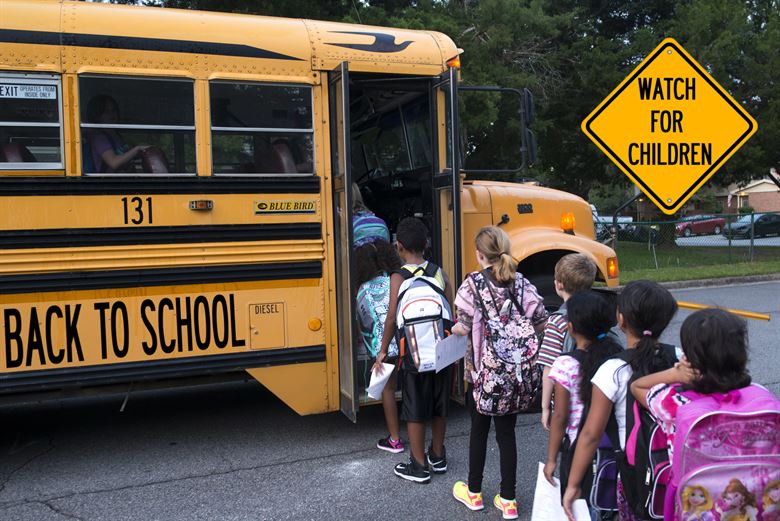The school year has officially kicked off – meaning your house is about to get a whole lot quieter and your daily routines a whole lot more hectic.
An estimated 56.6 million students will be heading to class across the United States each morning and of those students, 25 million of them will arrive bright-eyed and bushy-tailed by some 480,000 school buses. School buses are among the safest (and largest) modes of transportation for students – deemed safer than a family vehicle or walking, according to the National Safety Council.
Whether you are first time school-parents, new to sending your children on the bus, or new to the morning route, it’s important to understand the rules associated with school buses to ensure safe transit for all. School bus safety is extremely important – not only because it could be potentially life saving, but because it’s shows courtesy to others.
School Bus Safety Tips for Drivers
- Be alert. Buses mean bus stops and bus stops are likely filled with children waiting to catch their ride. Be on watch for kids out on the sidewalks or crossing the street.
- Go slow. When buses are present, children are present. Whether bus lights are flashing or not, it’s best to slow down incase kids dart out into the street or the bus makes a sudden stop or turn.
- Leave plenty of space. The 10 ft area surrounding a school bus is the most dangerous for children. Help bus drivers by giving them a wide berth and clear view of the area around them when driving or stopped behind them.
- Learn the school bus laws. Yellow or red flashing lights and a stop sign arm extended indicate children are preparing to load or unload from the bus and a signal for you to prepare to stop. REMINDER: It is illegal in all 50 states to pass a school bus that is stopped to load or unload children.
School Bus Safety Tips for Students
- Get there early. Be at the bus stop at least 5 minutes before the bus is scheduled to arrive to ensure quick and timely pickups.
- Maintain a safe distance. Stand or line up at least 6 feet away from the curb when the bus approaches.
- Remain visible at all times. If you need to cross the street, make sure the driver can see you. Be at least 10 feet in front of the bus and never walk behind the bus.
- Wait for the drivers go-ahead. Make sure the bus stops, doors open, and the driver invites you onto the bus before you step onto the bus.
- Use provided safety equipment. Things like handrails and seat belts are there for your safety. Use them while using the stairs and settling into your seat.
- Be courteous and follow instruction. Don’t make loud noises, stand up, put your head or arms out of the window, or engage in any activity that could distract the driver. Your bus driver is working hard to get you to school safely, be kind and follow their instructions while on the bus.
A Note for Parents: What happens if my child is involved in a bus accident?
No matter the safety precautions taken – accidents happen. According to the National Highway Traffic Safety Association (NHTSA), on average 134 people die in school-bus-related crashes each year. Of those, 8% are riding in buses, 21% are outside of the bus, and nearly 70% are killed riding in other vehicles. This is why school bus safety is so important for everyone – parents and drivers included.
One of the biggest risk factors on school buses are the lack of seat belts. Certain states like California, New York, and Nevada have laws requiring the use of seat belts on buses. Even then, however, many of these states requiring seat belts are on a roll out basis – meaning only new buses put into rotation are being equipped with safety belts.
Drivers of commercial buses are also governed under additional rules, safety features, and licensing, and are held to higher standards than non-commercial drivers. It’s important to understand the laws and requirements in your state to better protect your child on public transportation. If you or your child is involved in a bus accident, seek advice from a personal injury lawyer on the specific laws in your state, how to work with your insurance company, and the steps you can take to seek retribution.






No Comment